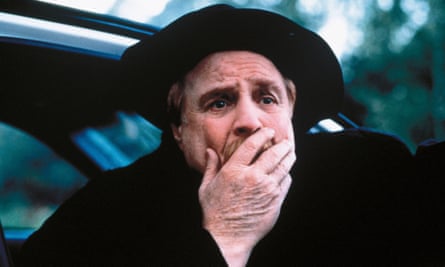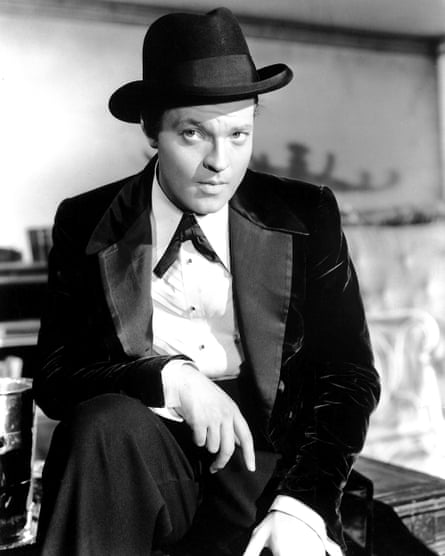Carnaby Street
I grew up in Hollywood and used to work at the newsstand on Melrose, which has a younger-kind-of-person scene. This place called Posers sold Ben Sherman and other British clothes; Soap Plant had really cool art and music; and Bleecker Bob’s was this really good record store.
We grew up close to an Irish family – the Gleesons – who had seven boys and three girls. The father, Redmond, was from Dublin and my hero. I was friends with the oldest brother, Reynard, who was in this 80s punk rock/skateboard gang called the LA Death Squad. He got me into British ska bands like Madness and the Specials, and punk bands like the Jam and the Clash.
We didn’t grow up with a ton of money, but my mom and dad always sent us on these international camps. They thought it was important for us to get a view of the world outside of Los Angeles. We went on camps to Italy, Portugal and London. By the time I got to Carnaby Street, I had a flat-top, a little sweater vest, a white shirt and black tie, and my heart melted away into the punk scene.
Marlon Brando
Marlon Brando was a huge influence on me. I loved him in On the Waterfront and A Streetcar Named Desire. I got to work with him on one of his last films, 1998’s Free Money. Someone called and said: “Do you want to do a day with Brando?” I thought: “Are you kidding me?” It was insane.

Brando plays a prison warden who is about to retire; I play a used car salesman who sells him this big truck. We were filming in Canada. It was snowing so he said: “Do you want to sit in my car? The heater’s on.” I said: “Yes, please, Mr Brando, thank you, sir.” His wife or girlfriend was sitting in the front so I sat behind him. I had only just met him so I was super-nervous and he started asking me how I became an actor and about my family. It was cold out so I had the sniffles. He said [does impression]: “Do you have a cold?” I thought: “No, it’s just the sniffles. But now Marlon Brando thinks I’m going to give him my cold.”
My girlfriend’s mother
I had a girlfriend, Stacy Klein. Her mother, Alice, loved old Hollywood, so her living room was decorated in all this classic Hollywood memorabilia. She had the movie channel and would play old Alfred Hitchcock and Jimmy Stewart films and classics like Double Indemnity, Wuthering Heights and Citizen Kane. She would make us meat and corn fried tacos as we sat in the living room. Sometimes Stacy’s little brother, Nicky, would sit with us, too. I looked at it as an education, watching all these different film-makers.

She liked me, but she was a bit of a tough case. Her husband Kingsley worked at the CVS [pharmacy chain] store right down the street, and their house was two blocks away from where Stacy and I went to Fairfax high school. She’d call me Low Life. “Here’s your tacos, Low Life.” So I’m not quite sure what she thought of me dating her daughter.
My high-school play: The Seventh Son
We would play improvisation games as a kid, because my dad [the actor Lewis Arquette] had studied and taught improv. I was part of the chorus for Gilbert and Sullivan’s HMS Pinafore at elementary school, which I really enjoyed. Then at high school, these girls I knew ran up to me: “David, you have to try out for the school play. They can’t find the lead. He gets to ride a motorcycle and he’s really cool.”
I met the drama teacher, Ben De Baldo, who ended up being a really huge influence. He’d written this musical called The Seventh Son, about this drifter whose motorcycle breaks down outside a women’s prison, and while he’s getting his bike fixed, he starts having all these affairs with the prisoners. It had this Grindhouse, exploitation style to it, a bit like Russ Meyer’s Faster, Pussycat! Kill! Kill!
I had to audition: I sang Runaround Sue, the old Dion song. My friends were hiding at the back of the auditorium, laughing. But I got the part and I got to drive a motorcycle through the auditorium up on to the stage, so I was thrilled.
Wild Style and the KGB crew
I was into breakdancing. My friend Jesse Simon’s mom, Diane, was really knowledgeable about art and said we should go and see this little arthouse hip-hop film called Wild Style. We went to see the breakdancing, but it was also about the whole subculture of hip-hop, rapping and graffiti. It melted our brains.
From the second we saw Wild Style, we started doing our own graffiti. There was also this book, Subway Art by Martha Cooper and Henry Chalfant, and a documentary, Style Wars. We picked a name for our crew – KGB, Kids Gone Bad – and did bombs [pieces] and tagged, too. We had rules: we stuck to public municipal spaces, never private property. The whole philosophy of graffiti art is: anywhere you go, you’re plastered with advertisements. So you want to steal back the space and get your art out there. KGB recently celebrated our 30th anniversary and we’re in the LA Graffiti Black Book by Getty – you should check it out.
My family
My great-grandparents were in vaudeville in the 30s, in Toledo, Ohio. They had an act called The Happy Hebrew and the Galloping Gazelle – he wasn’t Jewish and wore a fake Jewish nose and would now be thought of as extremely insulting. They nurtured my grandfather Cliff Arquette, who became famous for his persona, Charley Weaver, and a regular on the original Tonight show on NBC in the late 50s.
My dad worked for 45 years and was close to Christopher Guest and John Candy. He’d dress up as Butter the clown for my birthday parties. Butter would leave and I would say: “Dad! You just missed Butter the clown.”
He introduced me to the physical comedy of Buster Keaton, Charlie Chaplin and The Three Stooges. I’m always trying to add physical comedy, even to serious roles. Finding the humour gives another layer. I thought it was hilarious to play Dewey – the police officer from Scream – as someone who can’t get respect from authority. When I did [the 2001 comedy] See Spot Run, about this guy who has to take care of a kid and a dog, I trained with a professional clown. I get locked out of the house in my underwear and covered in dog poop. All that slipping and sliding in dog poop is a lot more choreographed than it looks.

Comments (…)
Sign in or create your Guardian account to join the discussion